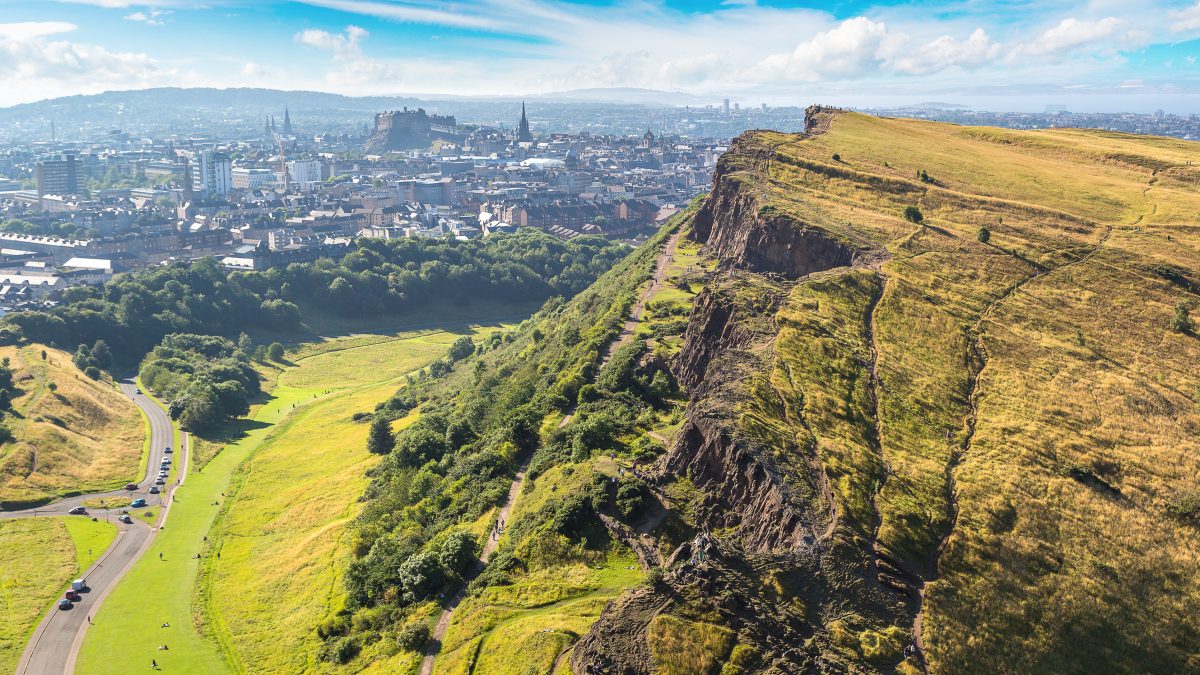A bold new vision for reducing Edinburgh’s carbon footprint has been published – outlining plans to have citizens’ needs met locally and creating a network of green and blue routes across the city.
The draft climate strategy was unveiled today with Scotland’s capital calling on its population to engage in a consultation process and shaping a greener, cleaner city by 2030.
The plan is based on fewer people commuting to offices in a post-covid world and a re-imagined city centre allowing for more walking, cycling and ‘wheeling’.
The council is also calling on government to make it easier to transition to a ‘net zero’ routes by supporting the city’s transition through ‘progressive legislative, regulatory and financial incentives’.
The strategy envisions that by 2030, citizens will be able to have their needs met locally, reducing the need for travel, communities will be protected from the impacts of climate change by a network of green and blue routes across the city, which also encourage plants and wildlife to flourish and that heat and energy needs of citizens and businesses will be met through new heat networks, and energy efficient buildings.
Council leader councillor Adam McVey said: “This strategy sets out a roadmap for the capital to help our businesses, public sector, organisations and residents across our communities reduce or remove their carbon footprint to help us get to net-zero by 2030 – which will be a hugely ambitious task.
“The plan aims to create the right conditions to unlock the opportunities that climate action presents, creating jobs and a more sustainable economy while we preserve our amazing capital for future generations.
“The best recovery from Covid-19 will be one which is green and fair and makes our city resilient to future challenges. If we act now, with pace, we will realise the future Edinburgh and its residents deserve and set in place a legacy of climate action which will go far beyond COP26 [the UN’s Climate Change Summit].”
Depute council leader, councillor Cammy Day said: “These proposed changes will affect everyone who lives in, works in and visits Edinburgh, so it’s only right that we continue to have a conversation with our residents, businesses and other stakeholders about how our city grows and changes to meet future needs.
“We will also work closely with the Edinburgh Climate Commission and Poverty Commission to integrate their work in the final strategy.
“We want everyone to play their part in these decisions, and I look forward to engaging with the public on this strategy, which offers a huge opportunity to invest in net zero action and ensure our young people inherit a thriving, sustainable city which is a cleaner and healthier place to live and work.”
Net zero is when any greenhouse gas emissions put into the atmosphere are balanced out by the greenhouse gases removed from the atmosphere, so that the “net” effect is zero emissions. Edinburgh has committed to ”net zero” emissions by 2030. To achieve this, the council must reduce the emissions it generates close to zero, and by 2030, make sure that it removes the same amount of greenhouse gases that as a city, it puts into the air. Emissions across the city currently amount to around 2.5 million tonnes of CO2e (carbon dioxide equivalent, and mainly come from the energy used in homes and buildings, followed by transport emissions. The city’s carbon outputs are currently estimated to be:
- Transport: 654 kilotonnes (kt)
- Stationary energy (i.e. consumption from industries, non-domestic buildings and homes): 1,654kt
- Agriculture, forestry and other land use: 24kt
- Industrial processes: 18kt.
- Waste: 78kt


However, the plan identities that as many as 100,000 older homes across the city may require retro-fitting to bring their energy performance certificate ratings to the level C or higher.
The post-covid changes to travel are also acknowledged as a source of potential ‘long-term benefit’ towards meeting climate goals.
A section says: “Lockdown restrictions and a shift to home working has resulted in less commuter travel and an increase in travel on foot and by wheel or bike. The pandemic has also facilitated a shift to online shopping, socialising, entertainment, banking, healthcare, adult education, and worship.
“While there has been a cost to the city from restrictions, we have also experienced some positive outcomes from lower traffic levels, cleaner air, more walking and cycling, flexible work patterns, and local trip-making.
“As the city recovers from the pandemic, we have an opportunity to capture these benefits of our changed behaviours for the long-term.”
And green and blue networks are defined as: ‘A strategic network of woodland and other habitats, active travel routes, greenspace links, watercourses and waterways, providing an enhanced setting for development, connecting and linking habitats and providing improved opportunities for outdoor recreation, well-being and cultural activity.” Examples of blue infrastructure ‘living roofs, ponds and rain gardens’.
To read the draft strategy visit here.




